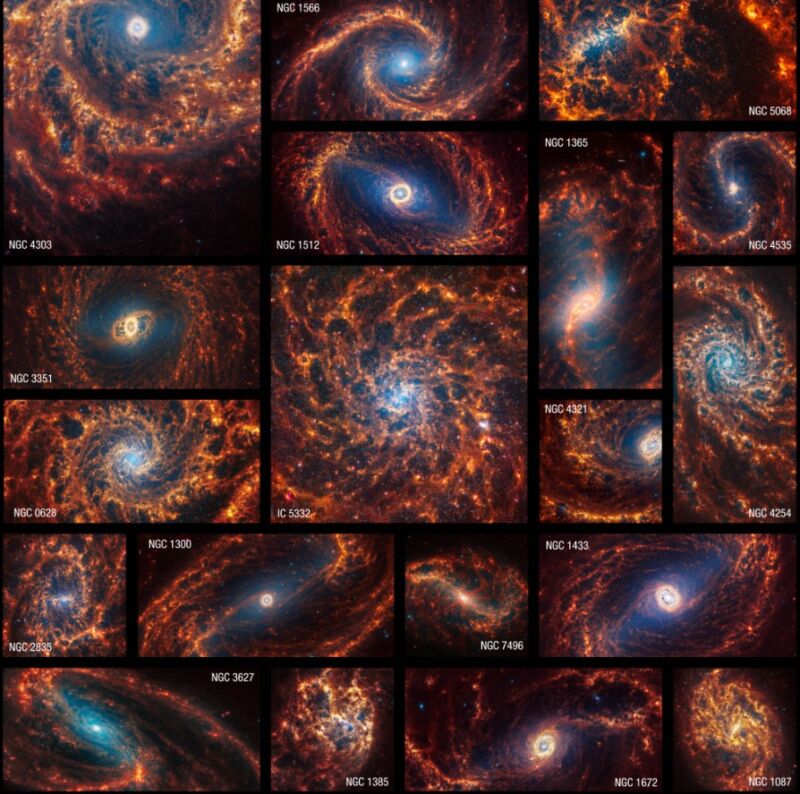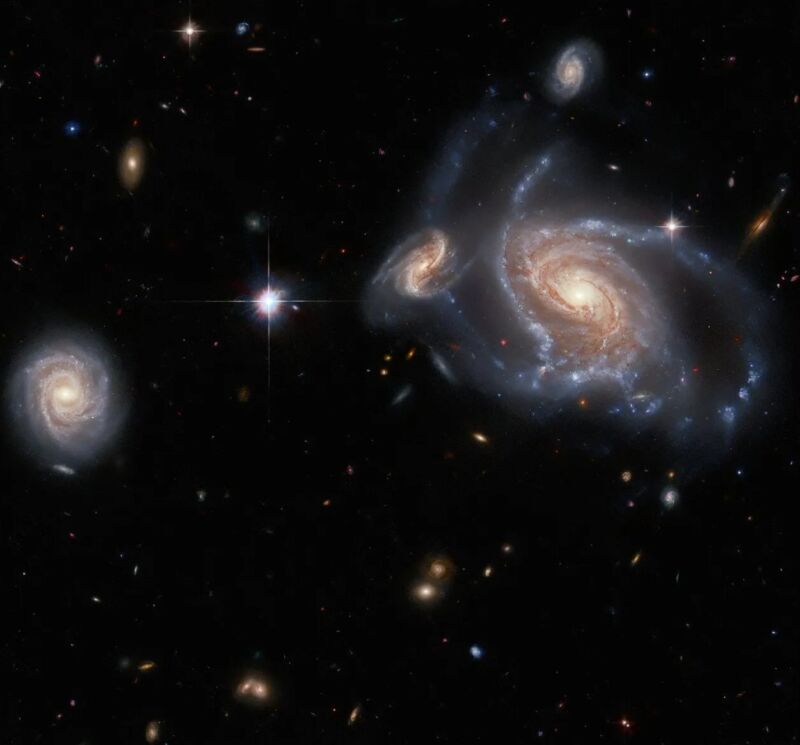
Good morning. It's January 31, and today's image comes from the James Webb Space Telescope. The image is actually a collage of many different photos.
NASA's new infrared telescope observed 19 nearby face-on spiral galaxies in near- and mid-infrared light as part of its contributions to the Physics at High Angular resolution in Nearby GalaxieS program (PHANGS). This program also includes images and data from NASA’s Hubble Space Telescope, the Very Large Telescope’s Multi-Unit Spectroscopic Explorer, and the Atacama Large Millimeter/submillimeter Array.
Astronomers have combined all of this information to glean new insights into spiral galaxies, which share much in common with our Milky Way. One thing that almost immediately stood out to astronomers was that Webb’s images show large, spherical shells in the gas and dust. "These holes may have been created by one or more stars that exploded, carving out giant holes in the interstellar material," explained Adam Leroy, a professor of astronomy at The Ohio State University in Columbus.
The study of these structures will provide key insights into how galaxies build, maintain, and shut off star formation. If you click through the link, it is fascinating to see the differences between the infrared data from Webb, and Hubble's optical images.
Source: NASA, ESA, CSA, STScI, Janice Lee (STScI), Thomas Williams (Oxford), PHANGS Team, Elizabeth Wheatley (STScI)



3175x175(CURRENT).thumb.jpg.b05acc060982b36f5891ba728e6d953c.jpg)
Recommended Comments
There are no comments to display.
Join the conversation
You can post now and register later. If you have an account, sign in now to post with your account.
Note: Your post will require moderator approval before it will be visible.